When explaining how Feline Coronavirus (FCoV) spreads, it's vital to emphasize that FIP itself is not contagious. Cats cannot transmit the mutated form responsible for FIP directly to others. Instead, the original FCoV spreads through fecal-oral transmission, meaning cats can become infected by contact with contaminated litter boxes, shared grooming areas, or food and water dishes. This is why FCoV is more common in multi-cat households, catteries, and shelters where cats live in close quarters. Maintaining good hygiene, frequent litter box cleaning, and reducing overcrowding can greatly minimize the spread of FCoV. Educating cat owners about this distinction helps prevent unnecessary fear and promotes responsible disease management.
How to Educate Others About FIP in Cats?
Simplifying the Science: Explaining FIP Transmission and Symptoms
The complicated and sometimes misunderstood condition known as Feline Infectious Peritonitis (FIP) affects cats all over the globe, posing a major challenge for veterinarians, researchers, and cat owners alike. This viral disease, caused by a mutation of the feline coronavirus, can lead to severe inflammation and organ failure, making awareness and education critically important. Being knowledgeable about FIP and having the ability to educate others effectively is essential for anyone involved in animal health, from veterinary professionals to compassionate pet owners. Focusing on the groundbreaking FIP treatment, this article aims to guide readers through the process of explaining FIP clearly and confidently—covering how the disease is transmitted, recognizing its key symptoms, and understanding current and emerging treatment options. By spreading accurate information, we can help reduce fear, promote early intervention, and improve outcomes for cats affected by FIP.
Our products



Simplifying the Science: Explaining FIP Transmission and Symptoms
Understanding FIP's Origins
Feline Infectious Peritonitis (FIP) originates from a mutation of the feline coronavirus (FCoV), a virus commonly found in many domestic cats. Most cats infected with FCoV experience no symptoms or only mild intestinal issues, as the virus typically remains confined to the digestive tract. However, in certain cats—often those with weakened immune systems or under high stress—the virus mutates inside the body, allowing it to infect white blood cells and spread throughout the system. This mutation triggers an exaggerated immune response, leading to inflammation in various organs. Because this process occurs internally and unpredictably, researchers continue to study why only some cats with FCoV develop FIP while others remain healthy carriers.
Transmission of FCoV
FIP can manifest in two primary forms: wet (effusive) and dry (non-effusive). Common symptoms include:
- Persistent fever
- Weight loss
- Lethargy
- Loss of appetite
- In wet FIP: fluid accumulation in the abdomen or chest
- In dry FIP: neurological symptoms or eye inflammation
Emphasize that these symptoms can be vague and mimic other diseases, making diagnosis challenging.
|
|
|
|
What Role Does GS-441524 Play in Modern FIP Treatment?
The Breakthrough of GS-441524
GS-441524 has emerged as a game-changing treatment for FIP. This antiviral compound works by inhibiting viral replication, effectively stopping the progression of FIP in many cases. When discussing GS-441524 with cat owners or fellow professionals, highlight its high success rate and the hope it brings to what was once considered a fatal disease.
Treatment Protocol
The standard treatment protocol for FIP using GS-441524 typically involves:
- Daily injections for 12 weeks
- Dosage adjustments based on the cat's weight and response to treatment
- Regular monitoring of blood work and clinical signs
It's crucial to emphasize the importance of completing the full treatment course, even if the cat appears to recover quickly.
Challenges and Considerations
While GS-441524 has shown remarkable results, it's essential to discuss potential challenges:
- The treatment can be costly
- Daily injections can be stressful for both cats and owners
- Availability may be limited in some regions
|
|
|
|
How to Discuss Treatment Options and Prognosis with Cat Owners?
Presenting Treatment Options
When discussing FIP treatment with cat owners, it's important to present all available options objectively. While GS-441524 has shown promising results, other supportive care measures may also be necessary. Explain the pros and cons of each option, including:
- Antiviral therapy with GS-441524
- Supportive care (fluid therapy, nutritional support)
- Immunomodulatory drugs
- Palliative care for advanced cases
Managing Expectations
While discussing treatment options, it's crucial to manage expectations. Explain that while GS-441524 has significantly improved the prognosis for many cats with FIP, it's not a guaranteed cure. Factors such as the stage of the disease, the cat's overall health, and adherence to the treatment protocol can all influence the outcome.
Addressing Emotional Aspects
Dealing with an FIP diagnosis can be emotionally challenging for cat owners. When educating others about FIP, it's important to acknowledge these emotional aspects and provide support. Encourage owners to:
- Seek support from other cat owners who have dealt with FIP
- Stay informed about the latest research and treatment options
- Focus on providing the best possible care and quality of life for their cat
Conclusion
Educating others about FIP requires a delicate balance of scientific knowledge and empathy. By simplifying the complex science behind FIP, explaining the role of groundbreaking treatments like GS-441524, and addressing both the medical and emotional aspects of the disease, you can effectively inform and support those dealing with FIP. Remember, knowledge is power in the fight against this challenging feline disease.
FAQ
1. Can FIP be prevented?
While there's no guaranteed way to prevent FIP, maintaining good hygiene in multi-cat environments and reducing stress can help minimize the risk of FCoV mutation.
2. How long does FIP treatment with GS-441524 typically last?
The standard treatment protocol with GS-441524 typically lasts 12 weeks, but some cases may require longer treatment periods based on the cat's response.
3. Is GS-441524 treatment available worldwide?
Availability of GS-441524 varies by region due to regulatory differences. It's best to consult with a local veterinarian for the most up-to-date information on treatment availability in your area.
Partner with BLOOM TECH for Your FIP Treatment Needs
Excellent GS-441524 is an essential component of FIP treatment, and we at BLOOM TECH know this. You can trust that the premium-grade items we provide as a top GS-441524 supplier are of the utmost purity and effectiveness. To aid veterinary practitioners and researchers in their battle against FIP, our team of specialists is committed. Our dependable supply chain and unwavering dedication to quality make BLOOM TECH the ideal partner for FIP treatment. Contact us at Sales@bloomtechz.com to learn more about our products and how we can support your FIP treatment efforts.
References
1. Pedersen, N.C. (2019). "Feline Infectious Peritonitis: Insights into Pathogenesis, Diagnosis, and Treatment." Journal of Feline Medicine and Surgery, 21(3), 245-257.
2. Addie, D.D. (2020). "Feline Coronavirus and Feline Infectious Peritonitis: Management Guidelines." Veterinary Clinics of North America: Small Animal Practice, 50(5), 1085-1103.
3. Murphy, B.G., et al. (2018). "The nucleoside analog GS-441524 strongly inhibits feline infectious peritonitis (FIP) virus in tissue culture and experimental cat infection studies." Veterinary Microbiology, 219, 226-233.
4. Krentz, D., et al. (2021). "Owner experiences and perceptions of GS-441524 treatment for cats with feline infectious peritonitis." Journal of Feline Medicine and Surgery, 23(12), 1145-1154.

Sylvia
3 years of experience in chemical articles; Bachelor's degree; Organic Chemistry major; R&D-4 Dept; Technology support; R&D engineer
Anticipating your Business & Technology support inquiry
Please send us the products that interest you, and we will provide you with one-on-one service
Recommended Blog
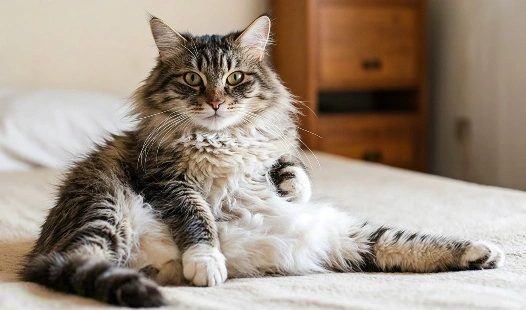
How to Spot Early FIP Symptoms and When to Start GS-441524?









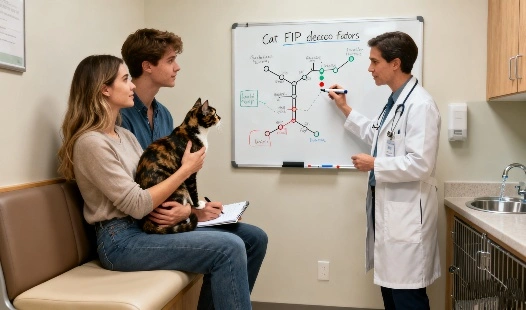
_副本_1760666343589.webp)
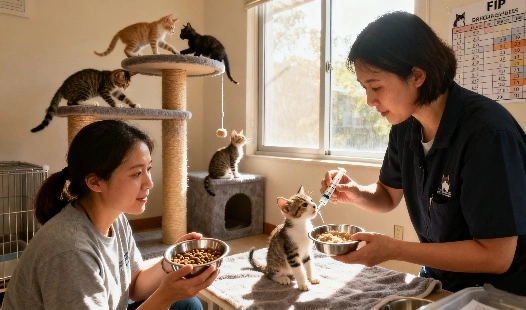

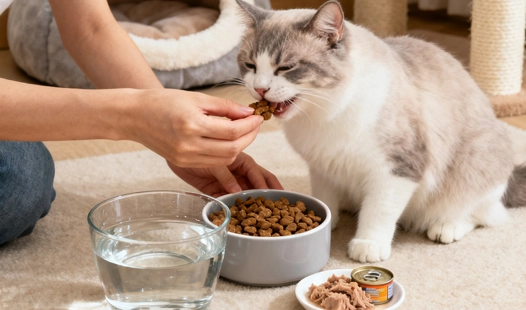
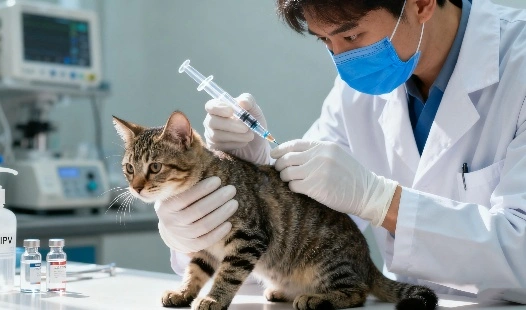

_副本_1760324384222.webp)
